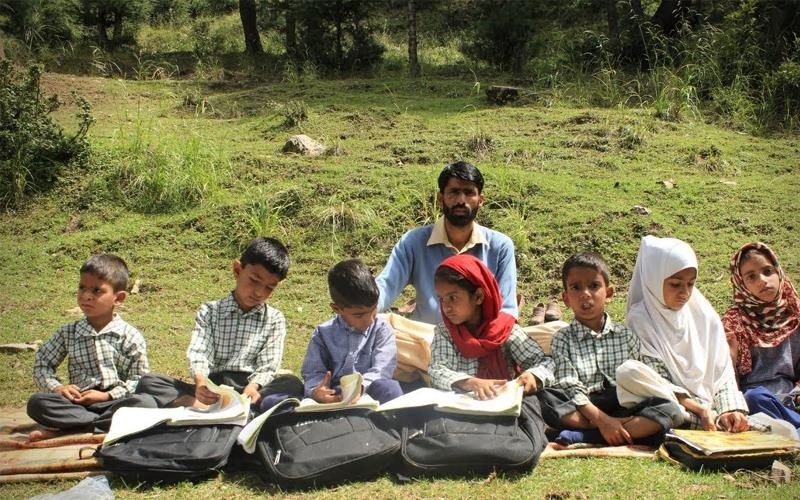Gujjar & Bakerwal: Collapse of mobile schools for nomadic children attributed to neglect, conflict
Vikram Sharma. Updated: 6/11/2024 12:48:41 AM
Front Page

JAMMU: The mobile schools for nomadic Gujjar and Bakerwal children, established in 1975, have seen a significant decline, with fewer than 100 of the original 400 schools currently functional.
This initiative, spearheaded by then Prime Minister Indira Gandhi following a proposal by Gujjar leader Chaudhary Mohammad Shafi, was part of a broader developmental program announced during a speech in Zanana Park, Jammu, which included a budget of Rs 16 crore.
Since there was no Board or any organization for Gujjars at that time, the then Chief Minister Mohammad Sheikh Abdullah installed his wife Begum Akbar Jehan Abdullah as first vice chairperson of the Board in 1976-77.
These schools, initially staffed by community members and supported by the state education department, provided free primary education while accompanying nomadic families to their summer pastures. The schools also offered uniforms, books, and stationery, though they did not include mid-day meals.
The rise of militancy in the Kashmir Valley in 1989 severely disrupted the movement of Gujjar and Bakerwal communities, leading to the gradual disappearance of these mobile schools. This disruption was compounded by government neglect, resulting in a disintegration of the educational system for these nomadic children.
Javed Rahi, a scholar in Tribal and Nomadic Research, highlighted the severe impact on literacy and access to modernization among Gujjar-Bakerwal children, making them one of the most educationally deprived groups.
Rahi emphasized that the mobile schools were once a crucial educational stepping stone, transitioning children to higher education through Gujjar hostels. However, these schools now exist only on paper, reflecting a systemic failure.
“Mobile schools were the most important source of education to children upto primary level from where they were shifted to high standards of education through various Gujjar hostels. Today , the schools only appear on the papers while on ground , the system has been left redundant ,” said Javed Rahi adding as per 2011 census , the Gujjar-Bakerwal population in state was 10,80,000, while in 2017 it has risen to 14 lacs which is 10 percent of the total population of the state.
Despite a proposal in 2010 by the Omar Abdullah-led NC-Congress government to add 200 more mobile schools, this initiative stalled due to disagreements with the then Education Minister, Peerzada Mohammad Syed.
This situation underscores the urgent need for renewed focus and resources to revive and sustain the education system for Gujjar and Bakerwal children, ensuring they are not left behind in the state's educational progress.
J&K has five big sub-tribes of Gujjars
• Banhara / DodhiGujjars : Presently inhabited in areas of Jammu/Udhampur/Kathua and Doda. The main business of this sub-tribe is dairy products etc
• BakarwalGujjars : This sub-tribe resides almost in every district of the state in a substantial number however, they are mostly the residents of Kalakote, Reasi, Nowshera, Bandipora, Shopian, Kulgam, Pahalgam, Tral and Uri etc.
• Alahiwal Gujjars: These migrated from frontier provinces of Pakistan and are mostly nomads.
• KanhariGujjars :These migrated from Swat and Hazara areas, presently in Pakistan . Now-a-days good number of these Gujjars live in Kalakote of Rajouri district.
• Semi-nomad Gujjars :This sub-tribe of Gujjars are those who have by and large prominently settled in various parts of the state .
Updated On 6/11/2024 12:50:35 AM